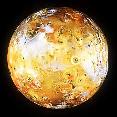Jupiter Emissions
Click on Links below for charts and sound recording files
Note: All times and dates are UTC. All Reeve Observatory charts and sound files were recorded from Radio SkyPipe II. The sound files were processed using GoldWave if needed (for example, to eliminate one channel from a stereo recording). It is best to listen to the sound files while in a very quiet room or with high-quality headphones. Avoid using laptop speakers.
Brief Explanation of Jupiter Radio Emissions
Noise bursts from Jupiter are classified as L-bursts and S-bursts:
- L-bursts sound like ocean surf on a beach and can have a swishing sound
- S-Bursts sound like pebbles thrown on a tin roof or the snapping and popping sound of cooking popcorn. Each S-burst lasts for a few thousandths of a second. S-bursts occur at rates as high as several dozen per second
Investigators have determined that probabilities of detecting Jupiter emissions strongly depend on the following factors (see definitions below table):
-
Jovian Central Meridian Longitude (CML)
-
Io Phase
-
Jovicentric declination of the Earth (De)
The combinations of CML and Io phase values that have increased probabilities are called Sources. The sources are named Io-A, Io-B, and Io-C for the Io-controlled (or Io-enhanced) emissions and A, B, and C for the Non-Io-controlled emissions. Emissions are more likely to be received for higher (more positive) De. De varies from about -3.4 to +3.4 degrees over an 11 year cycle due to the changing Earth and Jupiter geometry as they orbit the Sun at different rates. A positive peak occurred in October 2011 and the next negative peak will be in 2018.
|
Source |
CML |
Io Phase |
Polarization |
Type |
|
Io-Controlled |
||||
|
Io-A |
200 - 290 |
195 - 265 |
RH |
Mostly L-bursts |
|
Io-B |
90 - 200 |
75 - 105 |
RH |
Mostly S-bursts |
|
Io-C |
290 - 10 |
225 - 250 |
LH |
L- and S-bursts |
|
Non-Io-Controlled |
||||
|
A |
200 - 290 |
N/A |
RH or LH circular or elliptical |
|
|
B |
90 - 200 |
|||
|
C |
290 - 10 |
|||
Definitions:
CML The System III longitude of Jupiter facing the Earth at a certain time
Io Phase The orbital position of Io with respect to Jupiter and Earth. The Io phase is 0 degrees when Io is directly behind Jupiter as seen from Earth. The Io phase increases as Io orbits until it becomes 180 degrees when Io crosses in front of Jupiter as seen from Earth
De The declination (angular distance north or south of the celestial equator) of the Earth as seen from Jupiter
The above information was adapted from the following sources:
-
NASA's Radio JOVE project: radiojove.gsfc.nasa.gov/
-
University of Florida Radio Observatory (UFRO)
-
Radio-Sky Publishing: www.radiosky.com/dsube.html
Jupiter's moon Io (below, courtesy NASA).
